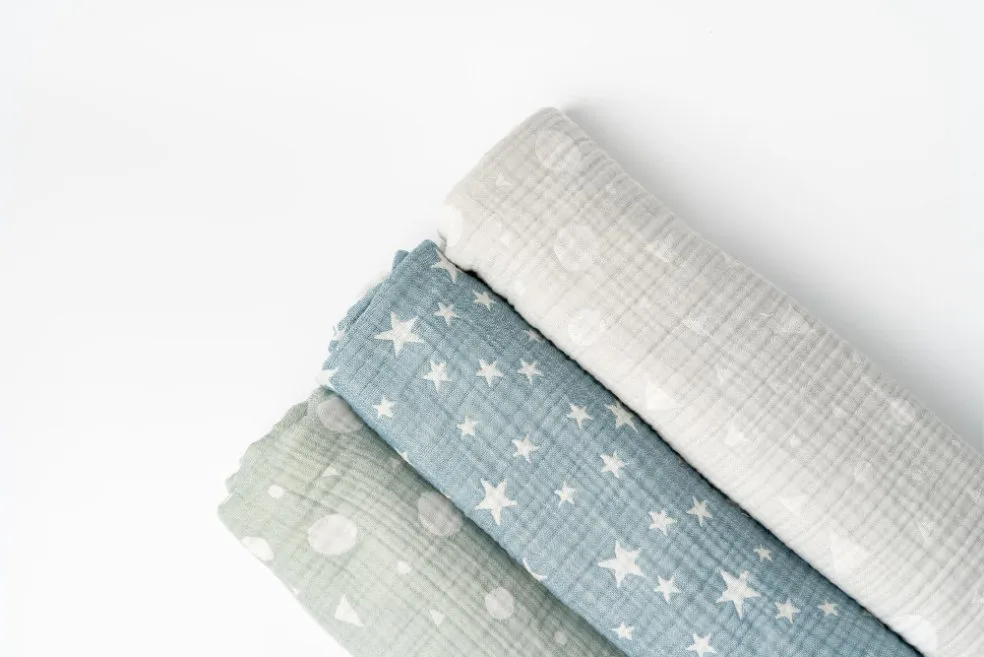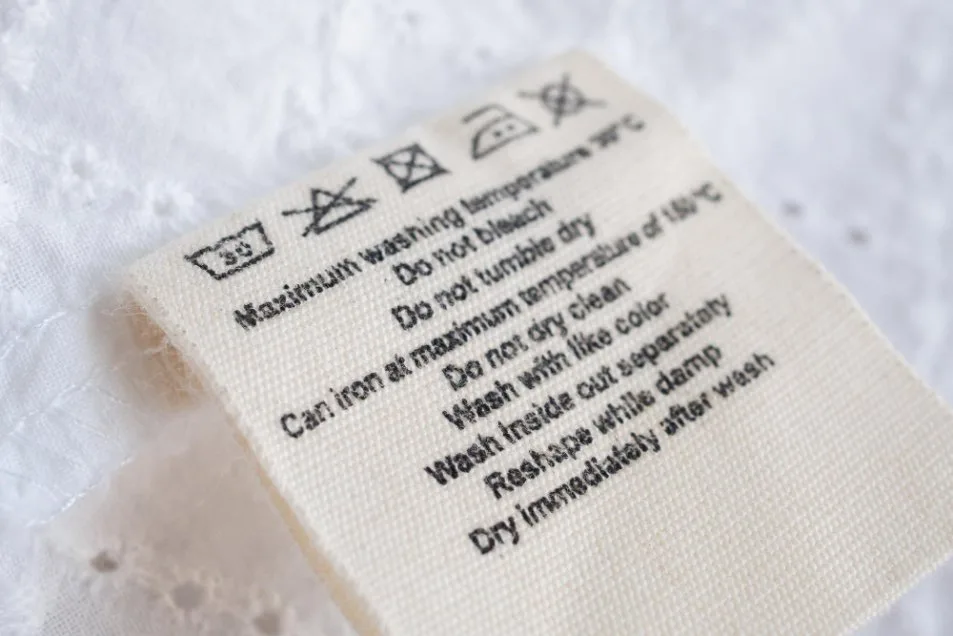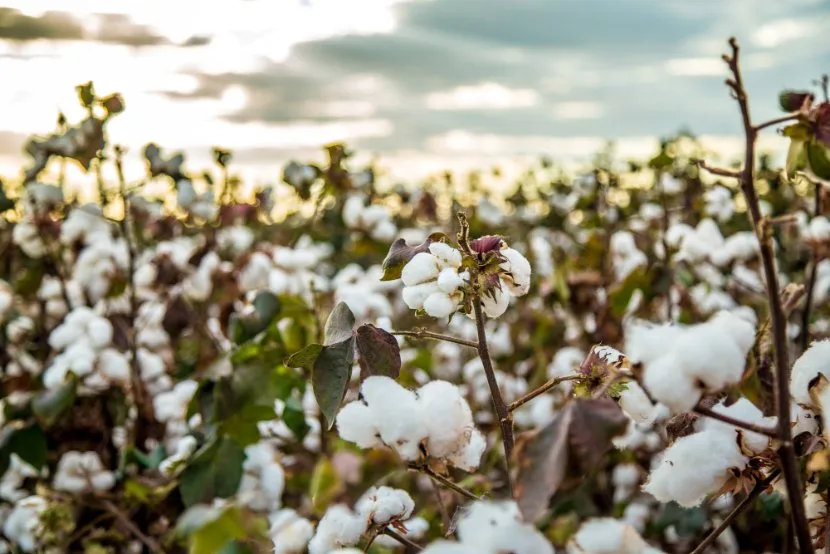Your comprehensive resource for choosing, caring for, and working with this versatile lightweight fabric
Table of Contents
What is Muslin Cotton?
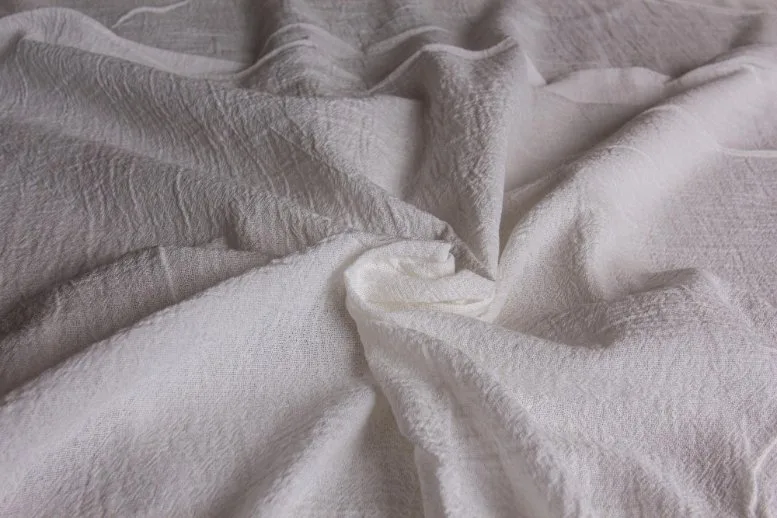
Muslin cotton is a lightweight, breathable fabric created using a plain weave technique where single weft threads alternate over and under single warp threads. This cotton fabric originated in ancient Bangladesh and has become essential for designers, quilters, and craftspeople worldwide seeking versatile natural textiles.
What is the Difference Between Cotton and Muslin Cotton?
Cotton refers to the fiber itself, while muslin describes a specific type of fabric construction. Regular cotton fabrics can include various weave patterns like twill or satin, but muslin specifically uses the plain weave method. This creates muslin’s characteristic loose, open texture that allows better airflow than many other cotton weaves.
Is Cotton Muslin 100% Cotton?
Traditional muslin is typically 100% cotton, though modern versions may blend cotton with other natural fibers like silk or bamboo. Pure cotton muslin fabric offers the best breathability and natural properties for pattern making and baby products. Always check the fabric label to confirm the fiber content.
What Type of Cotton is Muslin?
Muslin can be made from various cotton types, including combed cotton for smoother texture, organic cotton for environmental benefits, or standard cotton for budget-friendly options. The finest historical muslins used a special cotton variety called Phuti karpas, though modern production typically uses conventional cotton fibers for affordable muslin fabric by the yard.
Key Point: Muslin refers to the weaving technique and fabric structure, not a specific type of cotton plant. The quality depends on the cotton grade and thread count used in production.
Types and Weights of Muslin Fabric

Understanding different muslin weights helps you select the right fabric for your project. Each weight offers distinct characteristics for specific applications.
| Type | Weight (GSM) | Thread Count | Best Applications |
|---|---|---|---|
| Gauze Muslin | 40-60 | 40-60 | Medical uses, summer clothing, straining |
| Lightweight | 60-100 | 60-80 | Draping, baby products, linings |
| Medium Weight | 100-150 | 80-120 | Pattern making, quilting, garments |
| Double Gauze | 180 | 100-150 | Structured garments, baby blankets |
| Sheeting | 200-300 | 150-200 | Theater backdrops, upholstery, curtains |
What Does Muslin Cotton Feel Like?
Fresh muslin feels crisp and slightly rough, but softens significantly with each wash. The fabric has a natural drape that flows well without being too structured. Higher thread count muslins feel smoother against the skin, while lower counts have a more textured, rustic feel.
Does Muslin Cotton Get Softer?
Yes, muslin becomes noticeably softer with repeated washing and use. This quality makes it popular for baby products and newborn clothing, as the fabric develops a gentle, comfortable texture over time.
Key Benefits and Properties
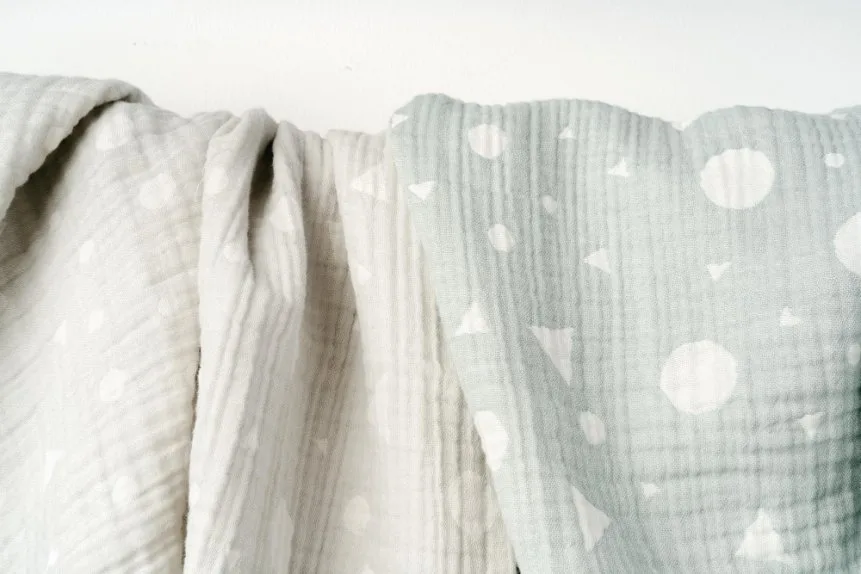
Natural Breathability and Comfort
The open weave structure allows excellent air circulation, making muslin ideal for warm weather clothing and summer fabrics. This breathability also helps regulate body temperature during sleep, which is why muslin bedding has gained popularity.
Is Muslin Good for Sensitive Skin?
Muslin is excellent for sensitive skin conditions. The natural cotton fibers are hypoallergenic, and the loose weave prevents fabric from trapping moisture or irritants against the skin. Many parents choose muslin for baby clothing because of these gentle properties.
Is Muslin Cotton Good for Eczema?
Yes, muslin’s breathable nature and soft texture make it suitable for people with eczema. The fabric allows air circulation while being gentle enough not to irritate sensitive skin. However, always choose organic muslin to avoid any chemical treatments that might trigger reactions.
Is Muslin Cotton Non-Toxic?
Pure cotton muslin is naturally non-toxic, especially when choosing organic varieties. Look for certified organic muslin to ensure the fabric meets strict standards for harmful substances and environmental impact.
Health Benefits: Muslin’s natural properties make it suitable for medical applications, baby products, and people with skin sensitivities. The fabric’s ability to soften over time while maintaining durability adds to its appeal.
Sustainability and Environmental Impact
The fashion industry’s environmental impact has made sustainable fabric choices increasingly important. Muslin offers several environmental advantages, particularly when produced using organic methods.
Organic vs Conventional Muslin
Organic cotton muslin provides significant environmental benefits compared to conventional options. Organic cotton production eliminates harmful pesticides and promotes biodiversity. Studies show organic muslin production uses 30% less water than conventional methods and supports healthier soil ecosystems.
Environmental Benefits
- Biodegradability: Pure cotton muslin decomposes naturally within 1-5 years, unlike synthetic fabrics that persist for centuries
- Water efficiency: Modern organic production methods reduce water consumption significantly
- Chemical-free processing: GOTS-certified muslin avoids harmful dyes and finishing chemicals
- Carbon footprint: Solar-powered dyeing processes can cut CO2 emissions by up to 45%
Sustainability Market Data
The global organic cotton market has grown 40% since 2015, with consumers increasingly seeking sustainable textile options. Muslin’s natural properties align perfectly with the circular fashion movement, where garments are designed for longevity and eventual biodegradation.
Is Muslin Natural or Synthetic?
Muslin is a natural fabric made from cotton fibers. Unlike synthetic materials such as polyester, muslin comes from renewable plant sources and breaks down naturally at the end of its useful life.
Practical Applications

Fashion and Garment Construction
Professional designers rely on muslin for pattern testing and garment prototyping. This process, called making a “muslin” or “toile,” allows adjustments before cutting expensive fashion fabrics. The fabric’s drape characteristics closely mirror how final garments will behave.
Is Muslin Cotton Good for Summer?
Muslin excels in hot weather due to its breathable weave and lightweight nature. The fabric allows air circulation while wicking moisture away from the skin, making it perfect for summer clothing and warm-climate garments.
Home Textiles and Décor
Interior designers use muslin for various home applications including curtains, pillow covers, and table linens. The fabric’s neutral appearance complements multiple design styles, while its affordability makes it practical for large projects.
Is Muslin Cotton Good for Bedding?
Muslin bedding has become popular for its temperature-regulating properties. The fabric’s breathability helps prevent overheating during sleep, while its softening quality improves comfort over time. Many parents choose muslin sheets and blankets for children’s rooms.
Specialized Uses
- Medical applications: Sterilizable gauze and bandaging materials
- Culinary uses: Food straining and cheese-making cloths
- Photography: Backdrop material and lighting diffusion
- Theater: Costume construction and set design
Advanced Applications and Industrial Uses
Beyond traditional applications, muslin serves specialized industries with unique requirements. Healthcare facilities use medical-grade muslin for surgical wrapping and wound care due to its sterilization capability and natural breathability. Photographers rely on muslin backdrops for portrait work, as the fabric’s neutral tone and wrinkle resistance create professional results.
The food industry utilizes muslin for commercial filtration processes, from brewing to dairy production. Art conservators choose muslin for textile restoration projects because its plain weave mimics historical fabrics without interfering with original materials. Industrial applications include dust covers for machinery and protective wrapping for delicate equipment during transport.
Industry Insight: According to textile industry experts, muslin’s consistent weave structure makes it reliable for quality control testing in manufacturing environments. The fabric’s predictable shrinkage rates allow engineers to calculate precise measurements for industrial applications.
Pro Tip: When using muslin for dress making patterns, choose a weight similar to your final fabric for accurate fitting results.
Complete Buying Guide
Why is Muslin Cotton So Expensive?
Price varies significantly based on quality factors. High-end muslin costs more due to superior cotton grades, organic certification, and careful manufacturing processes. However, basic muslin remains affordable, typically ranging from $3.50 to $15 per yard depending on width and quality.
Where to Buy Muslin Fabric
Online Retailers
- Mood Fabrics: Premium selection with detailed specifications
- OnlineFabricStore: Competitive pricing with bulk options
- Amazon: Convenient shipping with customer reviews
- FabricLore: B2B platform for wholesale purchasing
Trusted Brands
- Robert Kaufman: Consistent quality and wide availability
- Moda Fabrics: Reliable quilting-grade muslin
- Maywood Studio: Budget-friendly options
- Two Sisters Ecotextiles: GOTS-certified organic varieties
Decision Matrix for Muslin Selection
Use this interactive decision guide to choose the right muslin for your project:
Quick Decision Guide:
- Pattern making: Medium weight (100-150 GSM) muslin for accurate drape testing
- Baby products: Organic, GOTS-certified lightweight (60-100 GSM) options
- Home textiles: Double gauze (180 GSM) for durability and structure
- Summer clothing: Lightweight gauze (40-60 GSM) for maximum breathability
- Theater/backdrops: Heavy sheeting (200-300 GSM) for durability
Selection Criteria
| Factor | What to Look For | Why It Matters |
|---|---|---|
| Thread Count | 60-200 depending on use | Affects drape and durability |
| Width | 45″, 60″, or 120″ | Reduces seaming in large projects |
| Certification | GOTS, OEKO-TEX standards | Ensures safety and sustainability |
| Shrinkage | Pre-shrunk or expect 3-8% | Affects final project dimensions |
For specific project recommendations, consider using our Fabric Selector Tool to find the perfect muslin type for your needs. You can also reference the USDA organic textile standards for additional guidance on certified organic options.
For detailed project planning, try our Fabric Weight Calculator to determine the perfect GSM for your specific needs.
Care and Maintenance
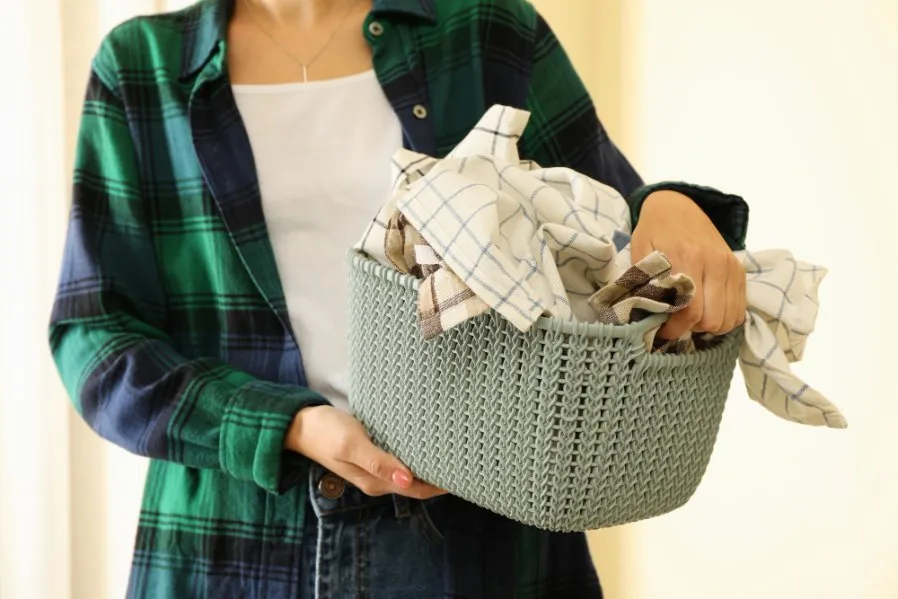
Should You Pre-Wash Muslin?
Always pre-wash muslin before starting any project. This removes manufacturing residues and prevents unexpected shrinkage in finished items. Use cold water and mild detergent for the first wash to minimize fiber stress.
Does Muslin Shrink?
Yes, cotton muslin typically shrinks 3-8% during the first wash, with organic varieties potentially shrinking more. Hot water and high heat drying increase shrinkage, so use cool temperatures when possible.
Proper Washing Techniques
- Water temperature: Cold to lukewarm (30-40°C/86-104°F)
- Detergent: Mild, fragrance-free options work best
- Cycle: Gentle or delicate setting for finished garments
- Loading: Don’t overcrowd the washing machine
Does Cotton Muslin Wrinkle?
Muslin wrinkles moderately due to its loose weave, but wrinkles release easily with steam or light ironing. Some blended versions with 5% lycell or special finishes reduce wrinkling by up to 60%.
Can You Put Muslin in the Dryer?
Yes, but use low heat settings to prevent excessive shrinkage and fiber damage. Air drying preserves the fabric’s natural characteristics and extends its lifespan. For projects requiring specific dimensions, always air dry.
Does Cotton Muslin Stretch?
Pure cotton muslin has minimal stretch (less than 5% elasticity). This low stretch makes it ideal for structured projects but requires careful pattern grading for fitted garments.
Care Tip: Store unused muslin in a cool, dry place away from direct sunlight. Roll rather than fold to prevent permanent creases, and use acid-free tissue paper for long-term storage.
Stain Removal and Troubleshooting
For stain removal guidance and fabric care troubleshooting, visit our Cotton Care Guide for detailed solutions to common muslin fabric issues.
Advanced Care and Storage Solutions
Professional textile care extends beyond basic washing. For long-term storage, wrap muslin in acid-free tissue paper and store in cedar-lined drawers to prevent moth damage. In humid climates, add silica gel packets to prevent mold growth while avoiding direct contact with the fabric.
Repair Techniques for Damaged Muslin
- Small tears: Use French seams for nearly invisible repairs
- Worn edges: Apply bias tape or create new hems using professional hemming techniques
- Color restoration: Tea-dyeing can restore natural muslin color to faded areas
Climate-Specific Storage Tips
Storage requirements vary by location. In dry climates, lightly dampen storage areas to prevent fiber brittleness. Coastal regions require extra ventilation to prevent salt air damage. Northern climates benefit from temperature-controlled storage to prevent freeze-thaw cycles that can weaken cotton fibers.
Expert Care Tip: Professional conservators recommend checking stored muslin every six months, refolding along different lines to prevent permanent creases, and rotating storage positions to ensure even air circulation.
Market Data and Trends
Global Market Overview
The global muslin fabric market is valued at $2.16 billion in 2025 and is projected to reach $3.34 billion by 2032, exhibiting a compound annual growth rate (CAGR) of 6.4%. This growth reflects increasing demand for sustainable, natural fabrics across multiple industries.
Market Segments
- Plain weave muslin: 35.9% market share due to versatility and cost-effectiveness
- Apparel applications: 35.1% of total market demand
- Asia Pacific region: 35.0% market share, led by India, China, and Bangladesh
Industry Trends
The fashion industry’s shift toward sustainability has boosted muslin demand significantly. Key trends include:
- Growing preference for organic and certified sustainable textiles
- Increased use in zero-waste fashion design
- Rising popularity in home textiles and bedding applications
- Expansion in medical and healthcare applications
Why is Muslin Fabric So Popular?
Muslin’s popularity stems from its unique combination of affordability, versatility, and natural properties. The fabric serves multiple purposes across industries while meeting modern demands for sustainable materials. Its ability to improve with use and biodegradable nature appeals to environmentally conscious consumers.
Expert Industry Perspectives
Textile manufacturing experts note that muslin’s consistent quality makes it a benchmark fabric for testing industrial processes. Fashion design schools rely on muslin for student projects because its predictable behavior helps beginners understand garment construction principles without expensive mistakes.
Industry Expert Insight: “Muslin’s plain weave structure provides the most accurate representation of how a garment will behave in final fabric form. This reliability has made it indispensable in professional pattern development for over two centuries,” notes textile historian Dr. Jennifer Thompson from the Fashion Institute of Design.
Cultural and Historical Significance
Muslin played a crucial role in global trade routes, connecting Asian producers with European markets. The fabric’s association with luxury in ancient times contrasts with its current accessibility, demonstrating how manufacturing innovations have democratized quality textiles. This historical journey from exclusive to universal reflects broader changes in textile production and distribution.
Frequently Asked Questions
Conclusion
Muslin cotton fabric continues to prove its worth as an essential material for designers, crafters, and everyday users. Its unique combination of breathability, versatility, and affordability makes it suitable for applications ranging from beginner sewing projects to professional garment construction.
The fabric’s sustainability credentials, particularly when choosing organic GOTS-certified varieties, align with growing environmental consciousness in the fashion industry. With the global muslin market projected to reach $3.34 billion by 2032, this ancient fabric clearly maintains relevance in modern applications.
Key Takeaways
- Choose the right weight: Match muslin weight to your project needs, from lightweight gauze for summer garments to heavy sheeting for durable applications
- Prioritize quality: Invest in organic, certified muslin when health and environmental impact matter
- Pre-wash always: Prevent shrinkage and remove chemicals by washing before cutting and sewing
- Consider long-term value: Muslin’s improving texture with use and biodegradable nature provide lasting benefits
- Support sustainability: Choose suppliers committed to ethical production and environmental responsibility
Whether you’re creating your first sewing project, testing professional patterns, or seeking comfortable, natural textiles for your home, muslin cotton offers reliable performance at an accessible price point. Its enduring popularity reflects the successful marriage of traditional craftsmanship with modern sustainability demands.
For those ready to explore muslin’s possibilities, start with a quality supplier, choose appropriate weight for your application, and enjoy working with one of textile history’s most dependable fabrics. The investment in understanding and properly caring for muslin will reward you with countless successful projects and comfortable, long-lasting results.

